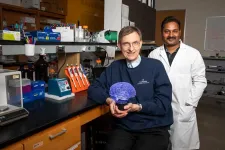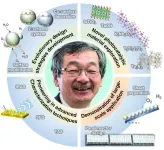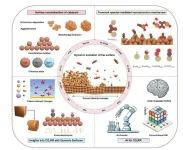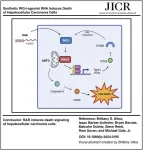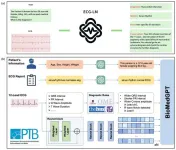Revealing the double-edged role of oxygen vacancy on ZrO2 catalysts in propane dehydrogenation
2025-02-19
(Press-News.org)
Propane dehydrogenation (PDH), as an efficient catalytic production process to obtain propylene, has developed rapidly in recent years. Previous studies have shown that zirconia exhibited excellent performance in the PDH, with the coordination-unsaturated zirconium (Zrcus) around the oxygen vacancy being the active site in the reaction. However, the critical role of oxygen vacancy is still remaining elusive, and lacked a rationale to establish a relation between structure and performance. Moreover, the strong binding of propene and hydrogen molecules shadowed the facile desorption at defective sites for good yields.
To resolve these issues, recently a research team led by Prof. Zhen Zhao and Prof. Bo Li from ShenYang Normal University (China) carried out a combined DFT and microkinetic simulation to explore the propane catalytic dehydrogenation on the tetragonal zirconia (001) and (100) pristine surfaces and surfaces containing oxygen vacancies, (001)-vac and (100)-vac surfaces, and make a direct comparison between pristine and defective surfaces.
Density of states (DOS) analysis shows that compared with the pristine surface, the generation of oxygen vacancies on the defective surface induced a new electron localized state close to Fermi level, which caused the rearrangement of charge density. And the orbital wave function analysis further confirmed that these electrons were mainly confined within the oxygen vacancy. The localized electronic state made Zrcus a good electron donor, thereby promoting the activation of C-H bonds in propane.
The PDH reaction pathway includes two successive dehydrogenation and desorption of the product (propylene and hydrogen molecules). On the pristine crystal surface, metal-oxygen pair is used as the active site of the propane C-H bond activation, and the propane decomposition products, C3H7 and H, are adsorbed on the zirconium and oxygen sites respectively. The active site changes to Zrcus on the defective surface containing oxygen vacancy. Compared with the pristine surface, the interaction between propane and Zrcus is significantly increased, which is conducive to the subsequent dehydrogenation step. Compared with the pristine surface, the reaction energy barrier of the first C-H bond on the defective surface is greatly reduced. However, due to the unsaturated coordination, propylene and hydrogen are strongly adsorbed at the Zrcus site, which hinders the effective desorption of the product.
The turnover frequency (TOF) results show that the defective surface has better catalytic performance than the pristine surface under typical reaction temperature, indicating that presence of oxygen vacancies indeed increase the performance. The degree of rate control (DRC) analysis show that the first C-H bond activation is the rate control step on the pristine surface, while the hydrogen formation is the rate control step on the defective surface, which confirmed that the pristine and the defective surface obey the different reaction mechanism. The results were published in Chinese Journal of Catalysis (https://doi.org/10.1016/S1872-2067(24)60163-4).
###
About the Journal
Chinese Journal of Catalysis is co-sponsored by Dalian Institute of Chemical Physics, Chinese Academy of Sciences and Chinese Chemical Society, and it is currently published by Elsevier group. This monthly journal publishes in English timely contributions of original and rigorously reviewed manuscripts covering all areas of catalysis. The journal publishes Reviews, Accounts, Communications, Articles, Highlights, Perspectives, and Viewpoints of highly scientific values that help understanding and defining of new concepts in both fundamental issues and practical applications of catalysis. Chinese Journal of Catalysis ranks among the top one journals in Applied Chemistry with a current SCI impact factor of 15.7. The Editors-in-Chief are Profs. Can Li and Tao Zhang.
At Elsevier http://www.journals.elsevier.com/chinese-journal-of-catalysis
Manuscript submission https://mc03.manuscriptcentral.com/cjcatal
END
[Attachments] See images for this press release:
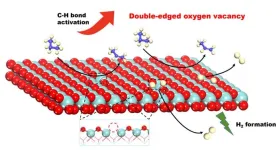
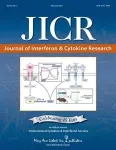
ELSE PRESS RELEASES FROM THIS DATE:
2025-02-19
CHAMPAIGN, Ill. — A genetic mutation found in two human patients with schizophrenia also increased schizophrenia-related behaviors in mice with the same mutation, a rare finding of a direct genetic link to psychosis, report researchers at the University of Illinois Urbana-Champaign and colleagues in Massachusetts and Germany.
The mutation increases levels of glycine decarboxylase, or GLDC, an enzyme responsible for regulating glycine in the brain. Glycine activates receptors for the neurotransmitter glutamate, called NDMA receptors.
“The genetics of schizophrenia is very complex, and it ...
2025-02-19
Humanity can farm more food from the seas to help feed the planet while shrinking mariculture's negative impacts on biodiversity, according to new research led by the University of Michigan.
There is a catch, though: We need to be strategic about it.
"We can achieve this sustainable mariculture development," said Deqiang Ma, who led the study as a postdoctoral researcher at the U-M School for Environment and Sustainability. "With strategic planning, we can achieve the goal of conserving marine species while meeting the global demand for the ...
2025-02-19
Harnessing solar energy to produce hydrogen from water – the photocatalytic water splitting reaction, is a promising approach for the carbon-neutrality future. This process utilizes semiconductor materials to harvest sunlight for the splitting of water into hydrogen fuel with oxygen gas generated as by-product. The solar hydrogen, as a carbon-free energy source, holds immense potential for decarbonizing industries, addressing global energy demands and mitigating environmental challenges. However, realizing practical ...
2025-02-19
The continued massive consumption of fossil fuels in modern societies has led to a range of environmental issues, including excessive CO2 emissions. In this regard, electrochemical CO2 reduction can convert intermittent electricity into chemical fuels and other value-added products, which holds the potential to close the carbon cycle. Among the various catalysts, metals are the most extensively studied heterogeneous CO2RR electrocatalysts and can be classified into three categories based on the main products. Containing Bi, ...
2025-02-19
New Rochelle, NY, February 19, 2025—A new study in the peer-reviewed Journal of Interferon & Cytokine Research (JICR) showed that a specific retinoic acid-inducible gene I (RIG-I) agonist RNA (RAR) induces innate immune signaling and death of hepatocellular carcinoma cells in vitro. Click here to read the article now.
Michael Gale, Jr., from the University of Washington School of Medicine, and coauthors, evaluated the actions of a specific RIG-I agonist RNA against two distinct human hepatocellular carcinoma cell lines. RAR is a synthetic-modified ...
2025-02-19
The Consortium of Multiple Sclerosis Centers (CMSC) is pleased to announce that registration is now open for its Annual Meeting, taking place May 28-31, 2025 in Phoenix, Arizona. This premier event is designed to provide healthcare professionals with the latest practical care strategies and scientific advancements in the field of multiple sclerosis and other CNS inflammatory conditions.
The CMSC Annual Meeting brings together leading MS specialists, researchers, and healthcare clinicians for a dynamic program featuring cutting-edge research, innovative treatment approaches, and interactive courses. Attendees will have the opportunity ...
2025-02-19
A team of researchers from Tsinghua University and Beijing Tsinghua Changgung Hospital has introduced a cutting-edge method to improve the interpretation of electrocardiogram (ECG) data. Their innovative model, called ECG-LM, leverages the power of large language models (LLMs) to interpret complex ECG signals more effectively and accurately. The groundbreaking research was published in Health Data Science, offering a transformative approach that promises to revolutionize heart-related diagnostics.
Electrocardiograms ...
2025-02-19
About The Study: In a representative study of adults experiencing homelessness in California, there was a high proportion of current drug use, history of overdose, and unmet need for treatment. Improving access to treatment tailored to the needs of people experiencing homelessness could improve outcomes.
Corresponding Author: To contact the corresponding author, Ryan D. Assaf, PhD, MPH, email ryan.assaf@ucsf.edu.
To access the embargoed study: Visit our For The Media website at this link https://media.jamanetwork.com/
(doi:10.1001/jama.2024.27922)
Editor’s Note: Please see the article for additional information, including other authors, ...
2025-02-19
About The Study: The findings of this study suggest that it is possible to predict diagnostic transition to schizophrenia and bipolar disorder from routine clinical data extracted from electronic health records, with schizophrenia being notably easier to predict than bipolar disorder.
Corresponding Author: To contact the corresponding author, Lasse Hansen, MSc, PhD, email lasse.hansen@clin.au.dk.
To access the embargoed study: Visit our For The Media website at this link https://media.jamanetwork.com/
(10.1001/jamapsychiatry.2024.4702)
Editor’s Note: Please see the article for additional information, including other authors, author contributions ...
2025-02-19
U.S. hospital occupancy after the end of the Covid-19 pandemic is significantly higher than it was before the pandemic, setting the stage for a hospital bed shortage as early as 2032, new research suggests.
In the decade leading up to the pandemic, U.S. average hospital occupancy was approximately 64%. In a study to be published in the peer-reviewed journal JAMA Network Open, the team of UCLA researchers found that the new post-pandemic national hospital occupancy average is 75% -- a full 11 percentage points ...
LAST 30 PRESS RELEASES:
[Press-News.org] Revealing the double-edged role of oxygen vacancy on ZrO2 catalysts in propane dehydrogenation


